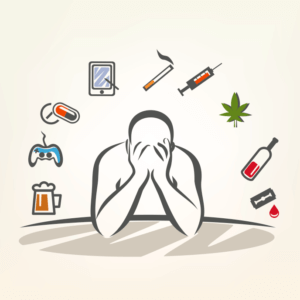Shock waves that hit the healthcare community from the July arrest of Salt Lake City…
Public health emergency: what the declaration means for healthcare
At the end of March 2017, President Donald J. Trump signed an executive order to create a committee that would research the opioid crisis and recommend a plan of action to counteract overuse of the medication. This summer, that committee — the President’s Commission on Combating Drug Addiction and the Opioid Crisis — published an interim report that urged the president to declare the opioid crisis a national emergency with the goal of moving Congress toward funding a resolution to the problem.
Recently, the president declared the crisis a public health emergency, which:
- expands telemedicine services
- streamlines the hiring process for health care professionals working to address the crisis
- allows grants for workers displaced because of opioid abuse
- lets HIV/AIDS programs help their clients in addiction recovery
These expansions of current programs mean change for some health care professionals in the next 90 days while the emergency designation lasts, but many others won’t be affected by the public health emergency.
So what can the rest of the industry do while waiting for the commission’s final report this week and any subsequent moves by the Trump administration?
Work with Government, Other Industries
![]() Patrice Harris, MD, chair of the American Medical Association Opioid Task Force and immediate past chair of the AMA, said the government alone wouldn’t be able to solve the crisis. Practitioners, drug companies and health insurance companies must work with the government to create an environment wherein opioids are prescribed to fewer patients, other treatment courses are found to treat pain, and treatment courses other than opioids are covered by patient’s health insurance.
Patrice Harris, MD, chair of the American Medical Association Opioid Task Force and immediate past chair of the AMA, said the government alone wouldn’t be able to solve the crisis. Practitioners, drug companies and health insurance companies must work with the government to create an environment wherein opioids are prescribed to fewer patients, other treatment courses are found to treat pain, and treatment courses other than opioids are covered by patient’s health insurance.
Reduce Use of Opioids
Within the industry itself, health care professionals can work toward reducing opioid use while still treating patients dealing with pain, suggested Healthcare Distribution Alliance President and CEO John Gray. Some patients may have limited options for pain management, so in some cases keeping patients safe may mean prescribing naloxone alongside any opioids. The fewer patients who receive opioid prescriptions, the fewer are at risk of addiction. Without government regulations in place, practitioners and organizations can take it upon themselves to help their patients by limiting opioid use.
Work with Local Government
Health care administrators can begin working with local government to reallocate funds where they need to be to tackle opioid addiction, suggested Blair Childs, senior vice president of public affairs for healthcare improvement company Premier. With the federal government’s declaration of a public health emergency, local and state officials have more flexibility to make changes. That said, they may not know where to begin. Offer your expertise as a health care professional to your local government where possible.
 Advocate for Mental Health Parity, Funding
Advocate for Mental Health Parity, Funding
National Union of Healthcare Workers President Sal Rosselli suggests mental health advocacy and parity is a huge step toward resolving the opioid crisis, but acknowledges that putting this step into practice is up to Congress. Similarly, Jonah Frohlich, managing director at health policy and business strategy advisory firm Manatt Health, believes health care professionals have their hands tied until Congress devotes money for local treatment and therapeutic recovery for those addicted to opioids.
Let your representatives in Congress know where you as an expert stand on these issues and share your professional perspective with others in your networks so they can reach out to their elected officials as well.
Get Familiar with New Joint Commission Standards
As of Jan. 1, 2018, all Joint Commission-accredited hospitals will need to implement new and revised pain assessment and management standards. Health care professionals can access the prepublication standards through the end of 2017. At the beginning of 2018, the standards will be available in the standards manual.
Update Your Policies with the New Standards
As you implement the new standards, don’t forget to update your policy management software with the new standards and how they affect your policies. Since all your staff members are able to access the software at all times, you’ll see more understanding and more buy-in. What other steps are you taking to combat the opioid crisis with your patients? Share with us on our Facebook page.
This Post Has 0 Comments